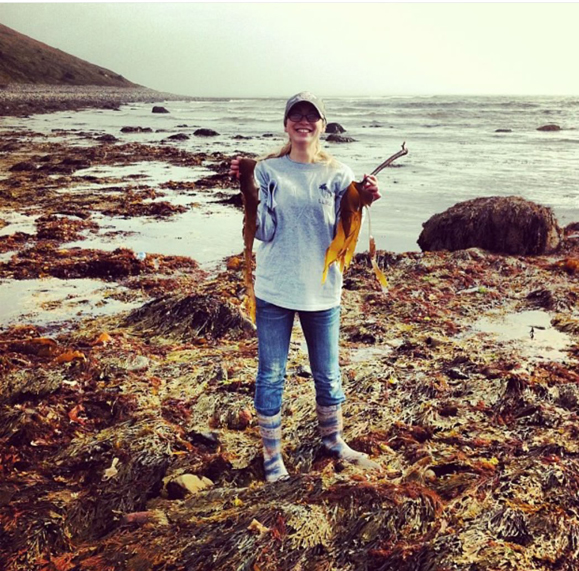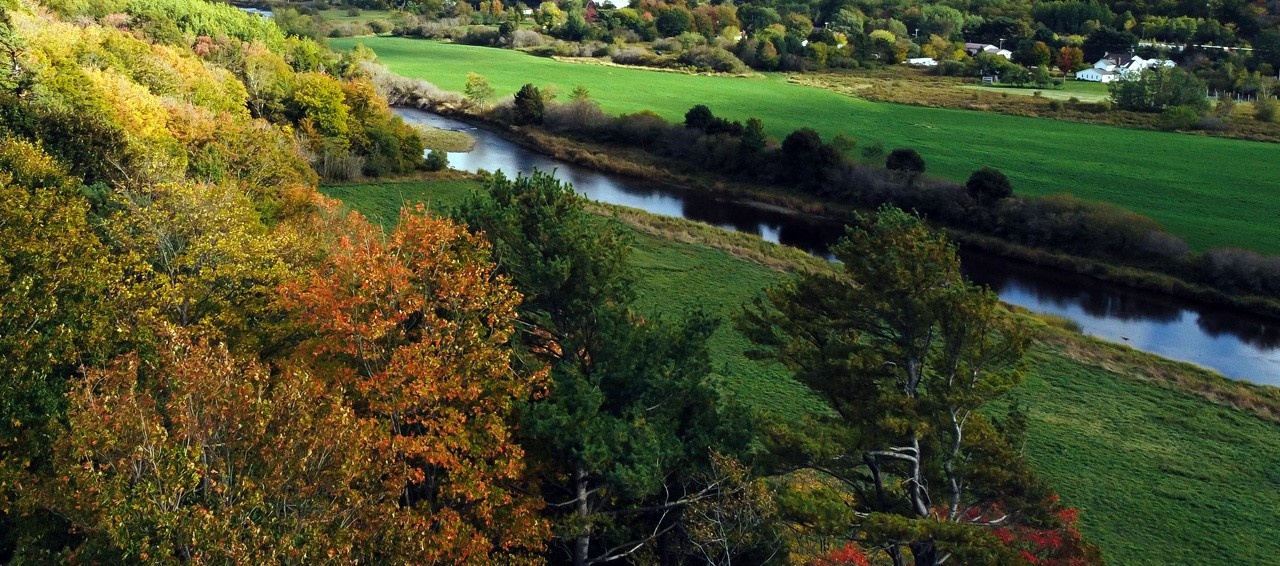By Emma Geldart
Growing up in North River, Nova Scotia and never far from the ocean, Victoria Maxwell has always had a passion for the ocean. She wasn’t always sure which career path she would take but she did know it would somehow involve the ocean.
 “I’ve always been connected with the ocean,” Victoria explains. “From spending my summers at my family’s cottage in Pugwash, I’ve always been interested in ocean life. I love exploring the reefs on the beach and spending hours looking for crabs, hermit crabs and starfish.”
“I’ve always been connected with the ocean,” Victoria explains. “From spending my summers at my family’s cottage in Pugwash, I’ve always been interested in ocean life. I love exploring the reefs on the beach and spending hours looking for crabs, hermit crabs and starfish.”
With her love for the ocean, Victoria discovered the possibility of a career in aquaculture in high school. She took the Oceans 11 class at Cobequid Educational Centre in Truro and she knew instantly what she wanted to do.
“This class really showed me the possibilities of working in aquaculture and marine biology,” Victoria says.
With a feel for a career in aquaculture, Victoria began looking at post-secondary options. It wasn’t long until she discovered the Nova Scotia Agricultural College (now Dalhousie University Faculty of Agriculture). As a leading teaching facility in aquaculture and environmental science, Victoria didn’t have to look any further.
“I choose to come to the Faculty of Agriculture as it is one of the leading educational facilities specializing in aquaculture,” she explains. “It also happens to be in my own backyard!”
Now, four years later, Victoria is set to graduate next spring with a bachelor’s degree in animal science, majoring in aquaculture and minoring in environmental science.
This summer, Victoria is putting her aquaculture passion and education to good use. She is working at the Pugwash and Port Howe estuaries looking at the invasive green crab populations and their impact on the environment.
The invasive green crab is a crab native to European and North African coasts that has been brought to North America through ballast waters of large ships and other and has no natural predators. Its largest impact is on eel grass in the estuaries.
Eel grass, grass that is submerged or partially floating, is very important to the health of the estuary. It acts like a nursery for many species. Although the green crab population does not eat the eel grass, it destroys it by cutting and digging up the roots of eel grass. The invasive green crab is also a very aggressive and territorial species that can easily out compete native species of crab like the rock crab, lady crab and mud crab that are native to the estuaries.
“We are interested in knowing if the green crabs are carrying any parasites that could possibly be passed to organisms that eat the green crab,” Victoria explains. “This could result in the transmission of deadly diseases. We also want to know how the invasive green crab effects the estuary. We are interested in finding where the green crabs are located in the estuary and what damage they are causing to the biodiversity in these areas.”
For Victoria, no two days are the same. She divides her time between collecting samples from the estuary and analyzing her gatherings in the lab, usually spending about 2-3 days sampling and two days in the lab. When out in the field at low tide, Victoria will set specially designed traps on the mudflats to catch the invasive green crab. She will also survey the site with a one-by-one metre quadrate for the types and quantity of each organism found, especially looking at the eel grass present. The next day at high tide, Victoria will pull the traps out of the water and collect any green crab. She then takes the green crab back to the lab at Dal where she documents the sex of the crabs, their size, checks their intestine for any parasites and takes blood samples to analyze the DNA for any possible parasites. Victoria’s research will help to solve problems that invasive species are causing.
“We need to fully understand the impact these invasive green crabs are having on our own local ecosystems and then more to combat the problems they are causing,” she explains. “This research will give the Friends of the Pugwash Estuary a full study of their estuary with more knowledge that they can share with the public.”
Not only is she looking at the direct impact of the invasive green crab, Victoria is educating the public about the impacts of the invasive green crab.
The Friends of the Pugwash Estuary is a non-profit group that is dedicated to the upkeep and public education of the estuary. Victoria explains that The Friends of the Pugwash Estuary are very involved in community education about marine conservation. Along with the group, she works to educate the public about the impacts of the invasive green crab. She works along with the National Conservator of Canada to run a lab at the Pugwash District High School on the invasive green crab biology. She hopes that she can continue to work with the Friends of Pugwash Estuary on educational presentations and outresearch programs.
“I feel there needs to be more education on the significance of estuaries and their importance to the beginning of life in the ocean,” Victoria explains. “Especially since we are a coastal province and are greatly expanding in undisrupted ecosystems.”
Upon her graduation, Victoria hopes to find a career in aquaculture. Ideally, she would like to work in the shell industry doing water quality sampling for sites for testing for possible contamination like coliform, biotoxins and heavy metals. Wherever she ends up, Victoria knows that she will be dedicating her time to bettering marine life in our beloved oceans.
Recent News
- Do you have any classes, trips, or research happening this summer?
- Microsoft Intune enrollment initiative
- Canadian Society for Agricultural and Biosystems Engineering
- Balancing Boots and Books: Dr. Jolene Vermeulen’s life as a vet, farmer, and educator
- Chartwells Update
- Join the Residence Life team – Residence Life Don
- Rolling With Pride: Dalhousie Faculty of Agriculture celebrates love, community, and color in the Truro Pride parade
- Romblon State University Summer Enrichment camp 2025 comes to a close
